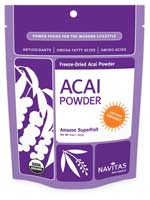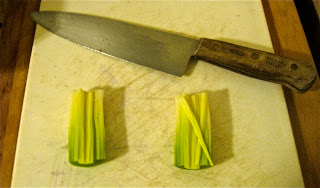Casseroles have a complicated history - some historians believe that casseroles have been around since prehistoric times:
"...when it was discovered that cooking food slowly in a tightly covered clay vessel softened fibrous meats and blended succulent juices....With the addition or subtraction of leftovers or inexpensive cuts of meat, the casserole is flexible and economical in terms of both ingredients and effort. The classic casserole, a French dish, was originally made with a mound of cooked rice...In the twentieth century, casseroles took on a distintive American identity. During the depression of the 1890's, the economic casserole provided a welcome way to stretch meat fish and poultry. Certain items were also scarce during World War I and leftovers were turned into casserole meals. The same was true during the Great Depression of the 1930s." (Oxford Encyclopedia of Food and Drink In America, 2004)
According to Wikipedia, types of casseroles include ragout, hotpot, cassoulet, moussaka, lasagna, shepherd's pie, gratin , and carbonnade; what distinguishes all of these is the fact that they are essentially one dish meals:
"The idea of casserole cooking as a one dish meal became popular in American in the twentieth century, especially in the 1950s when new forms of lightweight metal and glassware appeared on the market. The virtues of easy to prepare meals were increasingly promoted in the women's magazines of the era, thereby supposedly freeing the housewife from the lengthy drudgery of the kitchen...By the 1970s casserole cookery took on a less than sophisticated image..." (The Encyclopedia of American Food & Drink, 1999)The "less than sophisticated image" may stem from the fact that the characteristic method of preparing the Great American Casserole for the last 40-60 years is to use condensed cream-of-something soup as a base. The most popular and iconic are the tuna noodle casserole, prepared with canned tuna, cooked pasta, and cream of mushroom soup, and the green bean casserole, made with green beans, cream of mushroom soup topped with french fried onions. But as a whole food enthusiast I don't use canned soup; partly because I don't like to use prepared food and largely because most canned cream-of-something soup contain MSG, along with other nasty things that I try to avoid: soy protein isolate, modified food starch, and way too much sodium.
To my way of thinking, casseroles have a special kind of alchemy. You can throw together seemingly unrelated ingredients and end up with something resembling poetry (food poetry, but poetry nonetheless.) The sum is greater than it's parts and the results can be delectable. It's a challenge to find low carb casserole recipes (in addition to cream-of-something soup, the Great American Casserole usually uses items such as breadcrumbs and noodles) and an even greater challenge to find vegetarian low carb casserole recipes, but they do exist. They tend to rely heavily on various dairy products, so I've tried to increase the amount of vegetables so they're not quite so rich. But they are comfort food dishes, which generally means that they're higher in fat and calories. But I think it's important to indulge ourselves, especially when we have the holidays to contend with. I don't care what anyone says, this is not the most wonderful time of the year - it's back-to-back stress, inconvenience, and alternating bouts of rage and boredom. There's nothing like forced merriment, competitive shopping, and the nightmare of navigating grocery shopping and getting prescriptions refilled when stores are either chaotic with frantic consumers or closed for the holidays. We have to do whatever we can to make our lives as sane as possible.
The good news about casseroles is that you can use the oven this time of year without worrying about suffering the effects of heat stroke and you can make and freeze several servings at a time, either cooked or uncooked. And they do taste awesome! Another advantage is that you can use frozen vegetables, if need be. And while casseroles without meat are seen by many as side dishes, these are substantial enough to pass for main courses.
Spinach Casserole
Ingredients:
2 - 10 oz packages of frozen spinach, thawed and drained
4 oz Neufchatel cheese, softened (you can substitute cream cheese, but it has more fat, carbs and calories.)
1 large egg, beaten
2 oz cheddar or Monterey Jack cheese, shredded
1/4 tsp sea salt
1/2 tsp garlic powder
freshly ground black pepper, to taste
1 T dry white wine (you can also use fresh lemon juice)
7 g finely shredded parmesan cheese
butter for greasing casserole dish (or ramekins)
Optional:
1/2 T butter
2 oz leeks, trimmed and thinly sliced
Preparation:
*Preheat oven to 350º.
*Grease a casserole dish (I use a 4 x 4 inch square baking pan) or four 6 oz ramekins with butter.
*If you are using the leeks, saute in butter for a few minutes and add 1/4 cup water, cover and braise over a low heat for 4-6 minutes. Set aside.
*In a large bowl, mix all the ingredients, except the parmesan, until thoroughly blended. Spoon mixture into the dish or the ramekins and sprinkle the top with the parmesan.
*Bake for 30 to 35 minutes, until slightly brown and bubbly. Remove from heat and allow to cool before eating.
Without leeks:
Makes 4 servings and each has 227.55 cal, 5.56 net carbs, 15.75 g fat, 1.75 g fiber and 9.56 g protein.
With leeks:
Makes four servings and each has 263.63 cal, 7.06 net carbs, 18.5 g fat, 1.75 g fiber and 9.56 g protein.
Broccoli Casserole
Ingredients:
9 oz / 250 g fresh broccoli, cut into florets
1/4 T butter, softened
4 oz Neufchatel cheese, softened
2 oz cheddar or Monterey Jack cheese, shredded
1/4 tsp sea salt
1/4 tsp garlic powder/granules
freshly ground black pepper, to taste
Optional:
1/2 T butter
2 oz leeks, trimmed and thinly sliced
Preparation:
*Preheat oven to 350º.
*Steam broccoli for about 3 minutes. Drain and in a large mixing bowl, add cheddar, cream cheese, spices and leeks (if you're using them) and mix well. Spoon mixture into a well-greased, oven-safe baking dish and bake for 25 - 30 minutes, until slightly browned and bubbly. Allow to cool slightly before eating.
Without leeks:
Makes 4 servings and each has 166.18 cal, 3.6 net carbs, 13.81 g fat, 1.88 g fiber and 10 g protein.
With leeks:
Makes 4 serving and each has 210.43 cal, 5.06 net carbs, 15.19 g fat, 1.88 g fiber and 10 g protein.
Cauliflower Gratin
Cauliflower is the low carb wonder vegetable - it can be transformed into substitutes for rice, mashed potatoes, hash browns and even pizza dough. It is a member of the family of cruciferous vegetables (so called for the cross-shaped flowers that bloom on the plants) , which also include broccoli, brussels sprouts, kale, cabbage and bok choy. They are all high in vitamins, minerals and fiber, and they are considered by many to have disease-fighting phytochemicals. Cauliflower is a good source of fiber, folate and vitamin C and has a high nutritional density.
Ingredients:
14 oz / 400 g fresh cauliflower, cut into florets
4 oz Neufchatel cheese, softened
1 T butter
1 large egg
sea salt
freshly ground black pepper, to taste
nutmeg - optional
2 oz cheddar or Monterey Jack cheese, shredded
butter for greasing casserole dish
Preparation:
*Preheat oven to 350º.
*Grease casserole dish with butter and set aside.
*Steam cauliflower until fork tender (you can also boil it)
*Using a stick blender, mix together cauliflower, cream, butter, and seasonings until thoroughly blended.
*Add the egg and blend well. Adjust seasonings to taste.
*Spoon mixture into prepared casserole, sprinkle with cheese, and bake for 30-40 minutes, until top is golden brown.
Makes 4 servings and each has 202.55 cal, 3.06 net carbs, 14.5 g fat, 3 g fiber and 9.56 g protein.















































